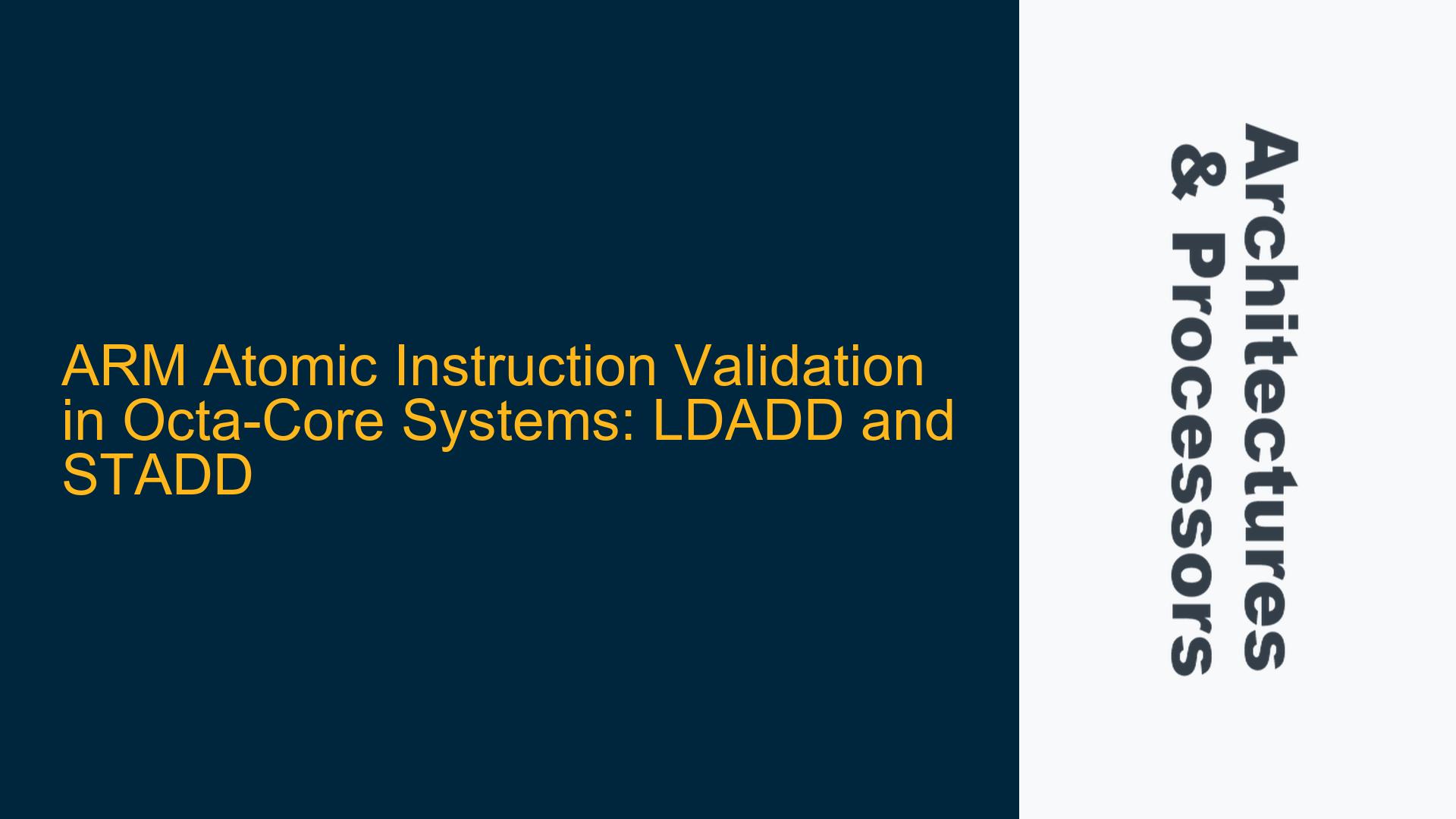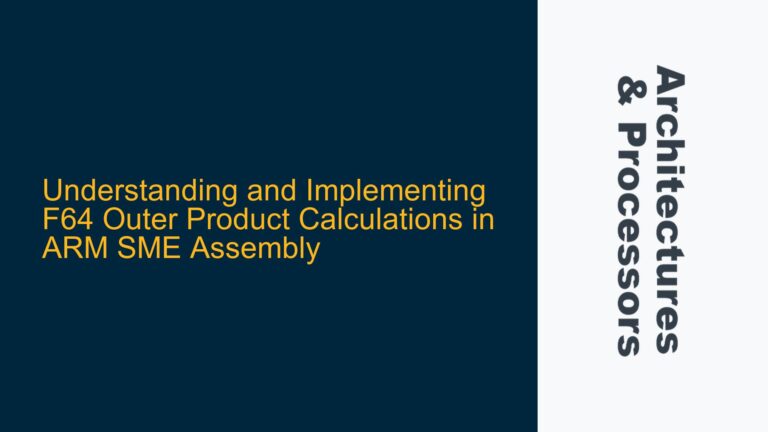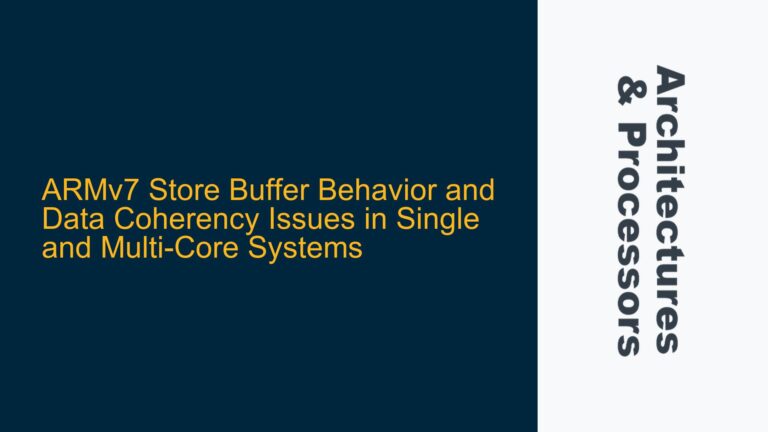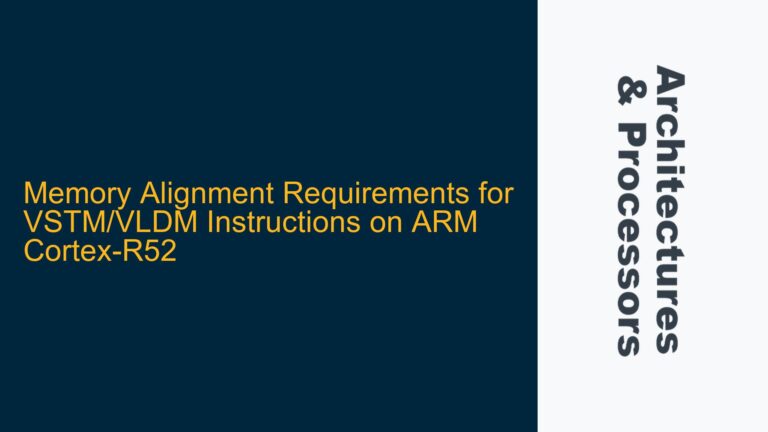ARM Cortex Octa-Core Atomic Instruction Challenges
Atomic instructions are fundamental to ensuring correct synchronization in multi-core systems, particularly in ARM architectures where concurrency and memory consistency are critical. In an octa-core system, the complexity of validating atomic instructions such as LDADD (Load and Add) and STADD (Store and Add) increases significantly due to the interplay between multiple cores, caches, and memory subsystems. These instructions are designed to perform read-modify-write operations atomically, ensuring that no other core or thread can interfere with the operation. However, validating their correctness in a multi-core environment is non-trivial due to the potential for race conditions, cache coherency issues, and memory ordering violations.
The primary challenge lies in the fact that atomic operations must appear to execute instantaneously from the perspective of all cores in the system. This requires not only correct implementation of the instructions themselves but also proper handling of the memory hierarchy, including caches and inter-core communication mechanisms. In an octa-core system, the likelihood of contention and subtle timing issues is magnified, making it essential to rigorously test and validate these instructions.
One of the key aspects of atomic instruction validation is ensuring that the memory model of the ARM architecture is respected. ARM architectures, particularly those based on the ARMv8-A profile, provide a weakly ordered memory model, which allows for significant optimizations in performance but also introduces complexities in ensuring correct behavior of atomic operations. The memory model defines how memory operations are observed by different cores and how they interact with each other. Misunderstandings or oversights in this area can lead to subtle bugs that are difficult to reproduce and diagnose.
Memory Model Tool and Litmus Test Limitations
The ARM Memory Model Tool is a valuable resource for understanding and testing the behavior of memory operations in ARM architectures. It allows developers to simulate different memory ordering scenarios and observe the outcomes, providing insights into how atomic instructions and other memory operations interact in a multi-core environment. However, while the Memory Model Tool is useful for exploring the theoretical behavior of atomic instructions, it is not a substitute for actual hardware testing, especially in complex octa-core systems.
Litmus tests, which are small programs designed to test specific aspects of concurrent behavior, are often used to validate atomic instructions. These tests can be run on actual hardware to verify that the instructions behave as expected under various conditions. However, creating effective litmus tests for atomic instructions in an octa-core system requires a deep understanding of the ARM memory model and the specific behavior of the instructions being tested. Additionally, litmus tests must be carefully designed to cover a wide range of potential scenarios, including edge cases that may not be immediately obvious.
One limitation of litmus tests is that they may not fully capture the complexity of real-world applications. While they can be useful for identifying basic issues, they may not reveal more subtle problems that only occur under specific conditions or workloads. This is particularly true in octa-core systems, where the interactions between cores, caches, and memory can be highly complex and difficult to predict.
Implementing Comprehensive Validation for LDADD and STADD
To thoroughly validate atomic instructions such as LDADD and STADD in an octa-core ARM system, a multi-faceted approach is required. This approach should combine theoretical analysis, simulation, and practical testing to ensure that the instructions behave correctly under all conditions.
The first step in this process is to conduct a detailed analysis of the ARM memory model and the specific behavior of the LDADD and STADD instructions. This analysis should include a review of the ARM Architecture Reference Manual, which provides detailed information on the behavior of atomic instructions and the memory model. Understanding the theoretical behavior of these instructions is essential for designing effective tests and interpreting their results.
Next, the Memory Model Tool can be used to simulate different scenarios and observe the behavior of atomic instructions. This can help identify potential issues and provide insights into how the instructions interact with the memory hierarchy. However, as previously mentioned, the Memory Model Tool is not a substitute for actual hardware testing, and its results should be used in conjunction with other validation methods.
Once the theoretical analysis and simulation are complete, the next step is to design and implement a series of litmus tests to validate the behavior of LDADD and STADD on actual hardware. These tests should be designed to cover a wide range of scenarios, including cases where multiple cores are accessing the same memory location simultaneously, cases where the memory location is cached, and cases where the memory location is uncached. The tests should also include variations in the timing and ordering of memory operations to ensure that the atomic instructions behave correctly under all conditions.
In addition to litmus tests, it is also important to conduct stress testing and performance testing to ensure that the atomic instructions perform well under heavy load and do not introduce significant overhead. This can be done by running the tests on a variety of workloads and measuring the performance impact of the atomic instructions.
Finally, it is important to review the results of the tests and analyze any issues that are identified. This may involve revisiting the theoretical analysis, refining the litmus tests, or making adjustments to the implementation of the atomic instructions. The goal is to ensure that the instructions behave correctly and efficiently in all scenarios, providing a solid foundation for concurrent programming in the octa-core system.
In conclusion, validating atomic instructions such as LDADD and STADD in an octa-core ARM system is a complex and challenging task that requires a thorough understanding of the ARM memory model, careful design of litmus tests, and rigorous testing on actual hardware. By following a comprehensive validation process, developers can ensure that these instructions behave correctly and efficiently, providing a reliable foundation for concurrent programming in multi-core systems.






